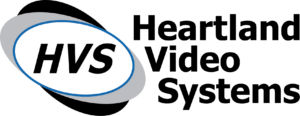What are the basic parts of the Videstra System?
The system consists of a V-Streamer 4-Channel Hardware Decoder, a V-Manager Windows 10 LTSC Server (with the V-Manager Server Software) and one or more VestraView Clients (software) installed on Windows computers around the station. Both the V-Streamer and V-Manager are 1RU x 19″ rack mountable computers. The V-Streamer runs Ubuntu Linux, the V-Manager runs Window 10 LTSC.
Can I use a V-Streamer by itself with my tower and rooftop cameras?
Videstra offers a version of the V-Streamer called V-Streamer Essentials reserved for small television markets (120+). This manages up to six cameras with a limited feature set. V-Streamer Essentials does not require the V-Manager software or Windows 10 server hardware. All functionality is provided by a web-based interface hosted directly on the V-Streamer.
What features of the VestraView System are included?
The basic VestraView system comes with the following licenses:
A total of 25 camera licenses. You may use these for Axis, Bolin, Sony, Truen cameras, or, using the VestraView Flex Panel(s) with nearly any camera capable of delivering H.264 or H.265 video via RTSP, RTMP, HLS or SRT protocols.
The basic system also gives you the Videstra Timelapse Factory(tm) for on-demand or scheduled time lapse movies and the Videstra Clip Factory(tm) for downloading up to 20 minute live recordings from Axis cameras from any time period within the past 3 days.
You also get full web publishing capabilities that include up-to-the-minute still images published from any camera and/or time lapse GIF or WEBM movies. The basic VestraView system also include 5 concurrent client licenses.
What features cost extra?
There is an additional one-time charge to activate the DOT capabilities of the Videstra system and there is a small monthly fee to publish cameras live to a website (Live-to-Web). There is an additional a one-time fee to add the Production Automation interface to control Videstra with Ross OverDrive or Grass Valley Ignite. The DOT, Live-to-Web and Production Automation can be added at any time.
What is Videstra CloudShare?
Videstra CloudShare lets stations within a group share cameras with each other. Cameras owned by a station remain in full control of the owning station and cameras used by affiliates are provided as view-only streams. All stations can create timelapse movies from their own or shared cameras.
Can I have unique branding and sponsorship branding on my cameras that are published to the web?
Yes – Images, Timelapse movies and Live-to-Web can have their own unique branding containing station and/or sponsor graphics embedded into the images or streams. These are independent of what you may be using as overlays on-air.
Can I put weather Information on my web-published content?
Yes. In conjunction with OpenWeather.org the Videstra system can embed weather information from each specific location. This includes many weather stats and icons.
Where does the weather information used in Videstra Web Publishing come from?
Videstra uses the OpenWeather API, or can optionally use the API from The Weather Company. Access to OpenWeather is free, however if you (or your company) have access to The Weather Company API we can use that as well. The advantage of OpenWeather is that it is free. The advantage of The Weather Company is that it is generated from the same source and weather models as the currents that display in your MAX weather graphics system (if that is the Weather Graphics System you use on-air).
Can the Videstra system be controlled by production automation systems?
Videstra offers the Production Automation interface, compatible with both Ross OverDrive and Grass Valley Ignite. The Production Automation system appears to these systems as an Evertz™ Quartz video router. The Quartz router capability must be available on the automation system before this interface can be used. Note that there may be additional costs required through Ross or Grass Valley.
Do you provide keyboards and monitors with the V-Streamer and V-Manager Server?
No – these devices are normally placed within the engineering racks at a television station and the monitor and keyboard functions are provided by a station KVM system.
Can I install IT provided anti-virus system on the V-Manager Windows 10 Server?
Yes. The welcome letter provided with the system explains how the Videstra system works within your IT policies.
Can I install VNC on the V-Manager?
Yes. Numerous Videstra customers do this.
Which IP-based cameras is the Videstra system compatible with?
Most camera models from Axis, Bolin, Truen and Sony are managed natively. Other cameras, from dozens of other manufacturers including Canon, Hikvision, Panasonic, Dahua, Mobotix, are supported with our exclusive Videstra Flex™ Panel.
Does the Videstra system support audio?
Yes. Incoming streams which contain AAC/AACLC and G711 offer audio embedded into the synchronous HD-SDI stream (Channels 1 & 2 only).
Does the Videstra system support overlays in the HD-SDI video?
Yes. Set up any panel to support fixed (permanent), user-selectable, or Scheduled overlay graphics. Scheduled Overlays were introduced in version 2.3.20 and allows you to have different “enforced” overlays based on day-part. The graphics support semi-transparency.
Does the Videstra system support MJPEG video streams?
No. Only H.264 or H.265 video streams are supported. Motion JPEG (aka MJPEG) is an older streaming format which requires too much bandwidth to be usable from cameras deployed over limited data connections.
Does the V-Streamer support IP Video output?
No. Not yet. Only HD-SDI at 720P, 1080i and 1080P 50/60 Hz is supported.
Does the V-Streamer support 4K resolution?
For input from a Micro-Local camera any resolution is supported from the H.264/265 stream (including 4K). The HD-SDI output is only available as 720P, 1080i or 1080P. Regardless of the input the output will be scaled to the appropriate HD-SDI resolution.
Can the V-Streamer be GENLOCKED to house sync?
Yes. The V-Streamer can be GENLOCKED to tri- or bi-level analog sync. The V-Streamer supports up to a full frame (vertical and horizontal increments) of sync offset.
What is Clip Factory™ and how is it different from Timelapse Factory?
Clip Factory is available for Axis cameras only. Axis cameras can record live video in a never-ending continuous loop. The loop can be as long as 96 hours. With Clip Factory you can review index images (1 minute thumbnails) to find points within the recorded loop to download. Download from 1 to 20 minutes of live recorded video from any time-period within the last 72 hours (3-days).
While Clip Factory gives you access to live recorded video, Timelapse Factory is available for all cameras (not just Axis) and creates only time lapse movies.
Can I schedule time lapse creation for use on-air?
Yes. With version 2.3.6 and later of VestraView you can set up a time lapse schedule that will create a time lapse that covers from 30 minutes to 5 hours prior to the time they are schedule to run. The Timelapse Scheduler can then automatically transfer the time lapse to a weather graphics system (such as The Weather Company Max or Baron Lynx), a traffic system (such as Max Traffic), or to a writable share on an accessible network.
I know images for time lapse are, by default, captured every minute, but can I set the system to capture images more often?
Yes. Videstra calls this HTR, High Temporal Resolution. Time lapse video will be ultra-smooth. Images can be captured in 15 second, 30 second, or 1 minute (default) intervals.


